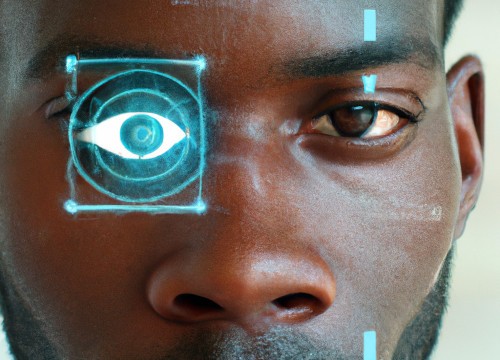Industry News
AI Shows Promise in Estimating Visual Acuity for Diabetic Macular Edema Patients
 In a recent diagnostic/prognostic study, researchers explored the potential of artificial intelligence (AI) systems in estimating best-corrected visual acuity (BCVA) from color fundus photographs of patients undergoing treatment for diabetic macular edema (DME). The findings of the study indicated that AI-estimated BCVA was within 10 letters of the actual BCVA, demonstrating the potential of regression techniques and deep learning in evaluating and monitoring DME remotely.
In a recent diagnostic/prognostic study, researchers explored the potential of artificial intelligence (AI) systems in estimating best-corrected visual acuity (BCVA) from color fundus photographs of patients undergoing treatment for diabetic macular edema (DME). The findings of the study indicated that AI-estimated BCVA was within 10 letters of the actual BCVA, demonstrating the potential of regression techniques and deep learning in evaluating and monitoring DME remotely.
BCVA is a critical measure used in managing DME, guiding treatment decisions such as the initiation, repetition, withholding, or resumption of anti-vascular endothelial growth factor therapy. By utilizing AI to estimate BCVA from fundus images, clinicians could potentially reduce the need for personnel involved in refraction and minimize the time required to assess BCVA. Moreover, it may even lead to a decrease in the number of office visits if remote imaging becomes a viable option.
The objective of the study was to assess the application of AI techniques in estimating BCVA from fundus photographs, both with and without ancillary information. Deidentified color fundus images obtained after dilation were used to train AI systems for regression from image to BCVA and evaluate the resulting estimation errors. The study participants consisted of patients enrolled in the VISTA randomized clinical trial over a period of 148 weeks, with the study eye receiving either aflibercept or laser treatment. The dataset included macular images, clinical information, and BCVA scores determined by trained examiners following the Early Treatment Diabetic Retinopathy Study (ETDRS) chart protocol.
The primary outcome of the study was regression, which was evaluated based on the mean absolute error (MAE). The secondary outcome included the percentage of predictions within 10 letters, computed for the entire cohort and subsets categorized by baseline BCVA from the baseline visit through the 148-week visit.
Analysis of 7,185 macular color fundus images from 459 participants revealed promising results. The mean age of the participants was 62.2 years, with 54.5% being male. The baseline BCVA scores for the study eyes ranged from 73 to 24 letters, approximately equivalent to Snellen visual acuity of 20/40 to 20/320. Employing the ResNet50 architecture, the MAE for the testing set of 641 images was found to be 9.66, with 33% of the values falling within 0 to 5 letters and 28% within 6 to 10 letters. When focusing on BCVA between 80 and 100 letters (20/10 to 20/25) and 55 and 80 letters (20/32 to 20/80), the MAEs were 8.84 and 7.91 letters, respectively.
The investigation demonstrates the potential of AI systems in estimating BCVA directly from fundus photographs of DME patients, bypassing the need for refraction or subjective visual acuity measurements. These estimates often align closely with results obtained from an ETDRS chart, indicating the feasibility of utilizing AI in this context. However, further enhancements in estimation accuracy are desirable to improve the reliability of this AI concept.
The implications of this research are significant, as it paves the way for more efficient and remote evaluation of BCVA in DME patients. AI-driven estimation of BCVA has the potential to streamline the management of DME, reduce the burden on healthcare personnel, and enhance patient care. As AI technology continues to advance, future refinements in estimating BCVA may further strengthen its applicability in clinical settings, bringing us closer to a more streamlined and accurate approach to monitoring and managing diabetic macular edema.
The study is published at JAMA Ophthalmology.


